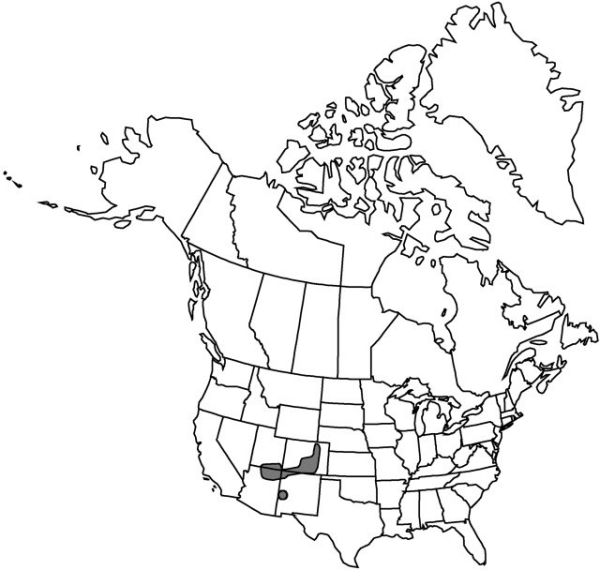Yucca baileyi
Contr. U.S. Natl. Herb. 6: 114. 1913.
Plants solitary or cespitose, forming colonies 1.3–2 m diam., acaulescent, erect or semierect, up to 0.2 m; rosettes usually small, symmetrical. Leaf blade yellowish green, plano-convex or plano-keeled, occasionally falcate, widest near middle, 25–45(–50) × 0.6–0.9 cm, rigid, smooth adaxially and abaxially, margins entire, recurved, filiferous, whitish, apex spinose, spine acicular, to 3.2 mm. Inflorescences racemose, arising within or just beyond rosettes, 2.5–4.5(–8.5) dm; bracts erect, purplish; peduncle scapelike, 0.1–0.2 m, less than 2.5 cm diam. Flowers pendent; perianth campanulate; tepals distinct, ovate to obovate or elliptic, 5–6.5 × 1.5–3.2 cm; filaments to 2 cm, finely pubescent; pistil green, 2.5–3.2 × 0.8 cm; style white, 7 mm; stigmas lobed. Fruits erect, capsular, dehiscent, oblong-cylindric, not usually constricted, 5 × 2.5 cm, dehiscence septicidal. Seeds dull black, thin, 6–10 mm.
Phenology: Flowering spring.
Habitat: Mountains, adjacent woodlands and grasslands
Elevation: 1300–2500 m
Distribution

Ariz., Colo., N.Mex., Utah.
Discussion
Some populations of Yucca baileyi comprise compact colonies of semierect, branched plants instead of scattered, cespitose individuals. These populations were recognized as var. navajoa by J. M. Webber (1953), who noted that Y. baileyi possibly hybridizes with Y. glauca and Y. angustissima.
Selected References
None.